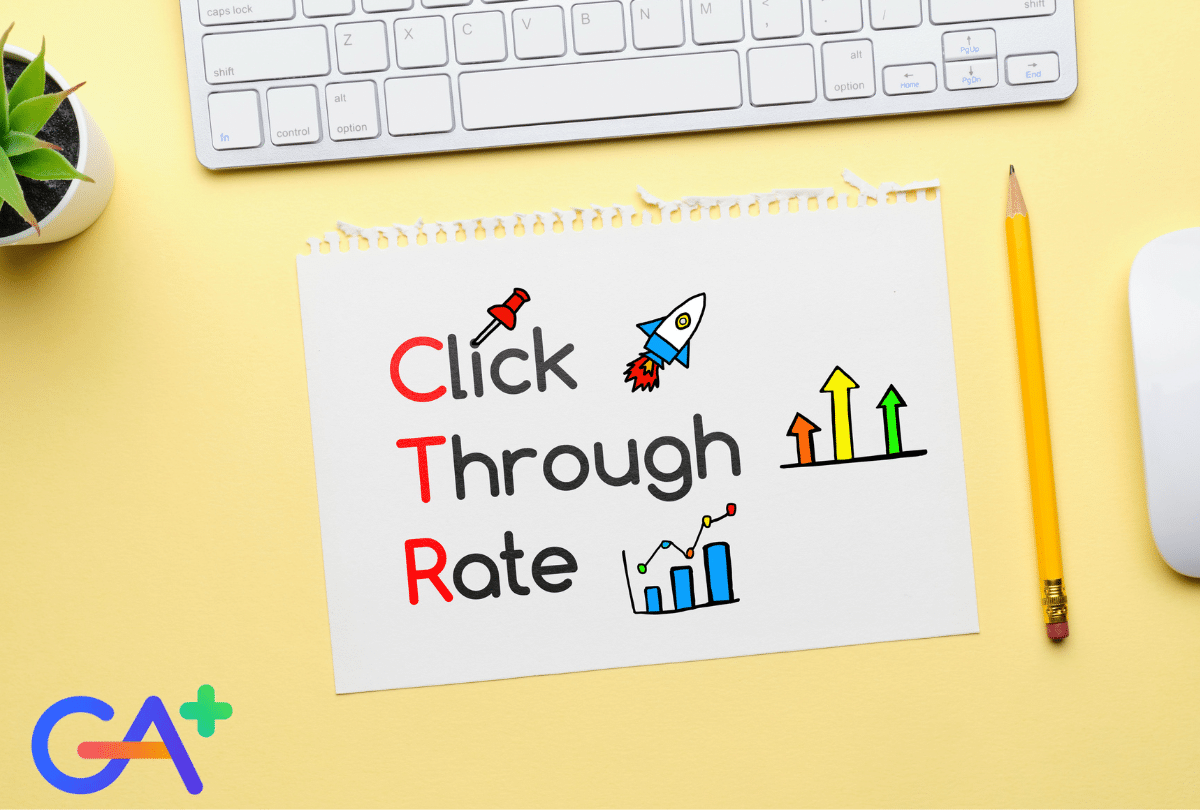CTR Optimization: How to Turn Impressions into Clicks

 SEO
SEO
Have you ever thought about why some things get noticed while some fade in the digital world? That’s where online visibility comes in. In today’s fast-paced digital world, finding ways to capture the audience’s attention is critical to excelling in business, and click-through rate (CTR) is one of those aspects. Regardless of whether working on the website, video or likes on a post, the endgame is turning impressions into actions. Click-Through Rate (CTR) works to optimize your online visibility. A high CTR signifies that the users are engaging with your content through search results, social media, and advertisements. In this blog, we’ll delve deeper into CTR optimization and how you can start translating those impressions into meaningful clicks.
Table of contents
- Understanding Click-Through Rate (CTR)
- What is Click-Through Rate?
- Why CTR Matters for Your SEO Strategy?
- Creating Engaging Meta Titles and Descriptions
- Utilizing Rich Snippets
- Keywords in CTR Optimization
- URL Structure
- Using Visual Elements: Images and Videos
- Analyzing User Behavior
- CTR Optimization Examples
- Common Mistakes to Avoid in CTR Optimization
- Conclusion
Understanding Click-Through Rate
Click-through rate (CTR) is the number of visitors who clicked on an advertisement or link divided by the total number of viewers who the page or an advertisement. This is often expressed in terms of percentage. For instance, if a hundred people see your ad and five of these people click on that ad, then your CTR is 5%.
A CTR of 2.0% or more is generally regarded as good, though what constitutes a good CTR varies by industry.
What is Click-Through Rate?
Click-Through Rate helps you understand how effective your content is in drawing the attention of users. A higher CTR is always desirable as it implies people are interested in your title and description and want to seek more value from your content. On the other hand, a low CTR indicates that the content is not sufficiently tempting or engaging, and you need to work on enhancing it.
Why CTR Matters for Your SEO Strategy?
CTR is considered an essential parameter in SEO since it has a direct effect on your ranking in search engines. Higher CTR can speak volumes to the search engines exhibiting that users find something useful, relevant, and interesting in your content. Plus, optimizing CTR improves user experience, demonstrating that you prioritize user needs and satisfaction. This not only boosts your credibility but also encourages repeat visits and saves users time in their search for information. Thus, focusing on CTR is essential for improving both your SEO performance and user engagement.
Creating Engaging Meta Titles and Descriptions
Meta tags are the first things that a visitor is likely to come across on your website.
To create engaging titles:
- Keep them concise: Ideally, it should consist of approximately 50-60 characters.
- Use action-oriented language: Phrases like “Find more,” “Get started,” or “Learn more” can encourage users to initiate clicks.
- Include your primary keyword: This serves to inform searchers that your content is relevant to them.
Furthermore, when creating meta descriptions try to keep them compelling and as relevant as possible. Ideally, it should be somewhere between 150-160 characters and should include keywords and a call to action to increase the chances of click-throughs.
Utilizing Rich Snippets
Rich snippets can make your search result more attractive and therefore increase the Click Through Rate (CTR). Rich snippets include additional information such as star ratings, prices, and images that make your listing distinguishable in search results.
To achieve rich snippets, you can utilize schema markup to assist search engines in better understanding the content on your page. For instance, you can display reviews on the product page and cooking time and food images in case recipe page. The more information and enhanced images you use, the richer your snippets get. This attracts more clickability, meaning more traffic and optimum encounter for your site’s visitors.
Keywords in CTR Optimization
To enhance your Click-Through Rate (CTR), incorporating relevant keywords is essential. Utilizing long-tail keywords in your headings and title tags is particularly effective, as they are highly descriptive and align with user search intent. This increases the likelihood of attracting clicks from users who feel confident that your content meets their needs.
To maximize the effectiveness of your keywords, keep the following points in mind:
- Avoid Keyword Stuffing: Don’t overload your content, as it impairs readability.
- Integrate Keywords Naturally: Seamlessly embed keywords into titles, headings, and body text for smooth flow.
- Enhance Engagement: Create informative content to improve your organic CTR and connect with your audience effectively.
URL Structure
Having a clear and concise URL structure is crucial for CTR optimization. Short and descriptive URLs are more user-friendly and easier to understand. For example, a URL like “https://yourwebsite.com/learn-ctr-tips” is more appealing than “https://yourwebsite.com/p=12345.”
Using Visual Elements: Images and Videos
Visual content such as images and videos can greatly enhance user engagement and improve your CTR. Posts with attractive images can increase click-through rates by 94%. Ensure your visuals are relevant and optimized with alt texts that describe the content, as this also contributes to SEO.
Analyzing User Behavior
Understanding user behavior through SEO tools like Google Analytics is key to optimizing CTR. Analyze data such as bounce rates, average session duration, and user demographics to refine your content strategy. This information provides insights into what attracts clicks and what may need improvement.
CTR Optimization Examples
- A/B Testing: Try different versions of titles and descriptions to see which yields a better CTR.
- Case Studies: Review competitors’ successful campaigns to identify effective strategies.
- Seasonal adjustments: Update content titles and descriptions based on trends or seasons to keep them fresh and engaging.
Common Mistakes to Avoid in CTR Optimization
- Ignoring Mobile Users: Ensure your content is mobile-friendly. A significant amount of web traffic comes from mobile devices.
- Overly Generic Titles: Titles should be specific to your content to attract the right audience.
- Neglecting Keywords: Failing to use keywords strategically can diminish visibility.
Conclusion
Optimizing your CTR is crucial for transforming impressions into valuable clicks that drive traffic and conversions. By understanding what CTR is, why it matters, and implementing strategies like compelling meta titles, rich snippets, and visual elements, you can enhance your online performance. Remember to analyze user behavior and avoid common pitfalls to maximize your click-through rates continuously. Embrace these techniques, and watch your online presence thrive!



